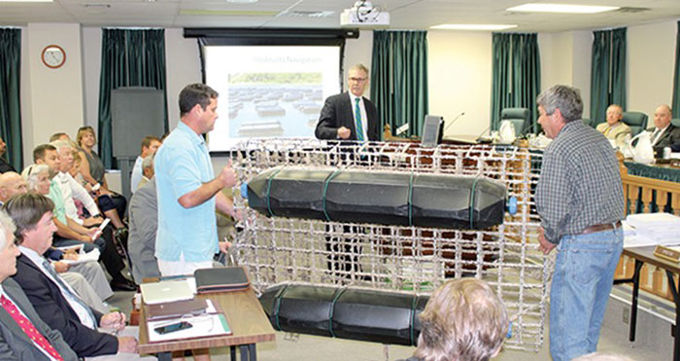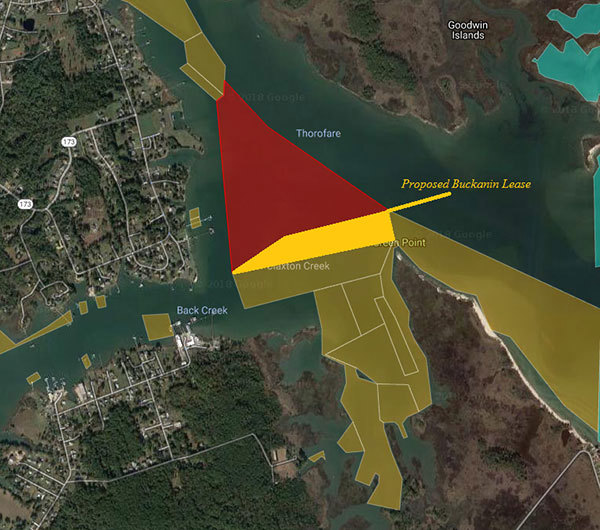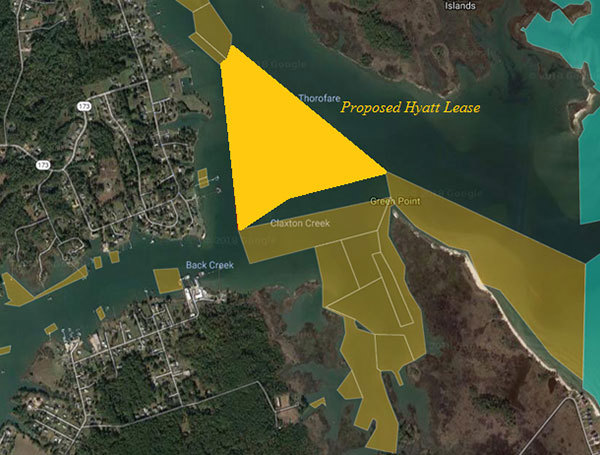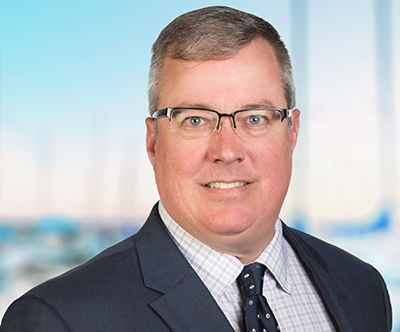
VA Riparian & Waterfront Property Rights at August 2018 VMRC Meeting
"VMRC decisions have direct and immediate consequences affecting the riparian property rights of Virginia's water front property owners. The VMRC makes these decisions at monthly meetings which are open to public. We attend the monthly VMRC meeting to represent our clients or as observers, and provide our readers a summary of the important cases."
The Virginia Marine Resources Commission (VMRC) is the state agency that manages Virginia’s marine resources. The VMRC regulates the fisheries and shellfish industries and issues permits for encroachments over state-owned submerged lands. It also manages the Virginia Wetlands Act, and the Coastal Primary Sand Dune Protection Act. VMRC decisions have direct and immediate consequences affecting the riparian property rights of Virginia's water front property owners. The VMRC makes these decisions at monthly meetings which are open to public. We attend the monthly VMRC meeting to represent our clients or as observers, and provide our readers a summary of the important cases.
The August meeting of the Virginia Marine Research Commission was held on August 28, 2018 in their offices in Newport News. In attendance were Commissioner Bowman and Associate Commissioners Ballard, France, Neill, Tankard, and Zydron. Commissioners Everett, Lusk, and Minor were absent.
After unanimously passing several, non-contested infrastructure applications, the Commission turned its attention to two contested infrastructure permits. Our proprietary data shows that year to date in 2018 the Commission has approved every contested infrastructure permit that has come before it for hearing and decision, even in those few cases where the VMRC staff recommended disapproval. The result at the August 2018 Commission meeting was no different.
"Our proprietary data shows that year to date in 2018 the Commission has approved every contested infrastructure permit that has come before it for hearing and decision, even in those few cases where the VMRC staff recommended disapproval. The result at the August 2018 Commission meeting was no different."
The first, Columbia Gas of Virginia, Inc., #18-0886, concerned a request to lay timber matting across approximately 1,624 square feet of non-vegetated tidal wetland in Chesterfield County in order to repair an existing natural gas transmission line and to install a 2-inch conduit containing a fiber optic line that would make it easier to track issues with the transmission line in the future. The VMRC staff recommended approval with certain restrictions designed to address concerns voiced by the Virginia Institute of Marine Sciences. Although no one spoke in opposition the project was contested due to written protests submitted to VMRC in advance of the hearing. The Commission unanimously approved the permit with the suggested conditions.
The second infrastructure permit, Asfari Homes Inc., #18-0998, was submitted by a home builder to construct an 8-foot wide riprap stormwater outfall on the beach on Willoughby Bay in Norfolk. The applicant was building duplexes further upland, and reserved a portion of the property for a stormwater basin in accordance with Norfolk requirements. As part of its plan, the applicant wanted to run two 6” pipes through a 2’ tall sand dune onto the beach which could be used to drain the basin. Additionally, a 40 square-foot riprap splash protection would be constructed to protect the dune from erosion. The staff recommended the project as proposed. A resident of the neighboring condominium spoke in opposition to the project claiming that it would be dangerous to kids who play around the basin and that the building project would cause additional flooding at his residence during hurricanes and nor’easters. The project engineer addressed the opposition concerns by saying the pipes would actually mitigate the potential flooding. Commissioner Bowman pointed out that the Commission had no authority over the building project, but was limited to considering only the pipe and riprap issue. The Commission then voted unanimously to approve the permit as proposed.
The Commission then took up two permits concerning oyster leases on the Thorofare in York County. Our proprietary data shows that year to date in 2018 the Commission has approved 73% of the contested oyster lease applications that have come before it for hearing and decision.
The first lease application, Robert Buckanin, Oyster Planting Ground Application #2015-174, concerned an approximately 20-acre, roughly rectangular lease at the mouth of Back Creek. The proposed Buckanin lease ground is shown in the following diagram:

The eastern portion of the proposed lease had a depth as shallow as 2’, while the northwestern corner of the lease was in the channel leaving Back Creek. The US Army Corp of Engineers (“USACE”) requested that the VMRC not allow the lease to extend into the channel, so the staff recommended shaving off just under 2 acres. With that change, the staff recommended that the Commission approve the lease.
Mr. Buckanin spoke at the hearing and stated that he intended to place oyster cages on the bottomland of the lease. He stated that he has been raising oysters on his friends’ leases, and that this was his first attempt to lease bottomland for himself. Three individuals, including a representative of the local yacht club, testified in opposition. Their main argument was that the Thorofare and the channel out of Back Creek both experience a lot of boat traffic. They pointed out that, beside the residents of Back Creek, the traffic also included the boats from both the local marina and the deep water boat slip at Back Creek Park. Another problem, they pointed out, was that the marina rented small sailboats that were used to train boaters on how to sail, and were also used in competitive racing on and around the area of the lease. After questioning the parties, several Commissioners commented on their concern that the area was so highly trafficked and that the lease had very shallow areas that could be dangerous for boats outside of the channel. Taking the matter up for a vote, the Commission voted unanimously to deny the application.
The second oyster lease application, Roderick D. Hyatt, Oyster Planting Ground Application #2017-090, concerned what originally was a triangular-shaped, 83-acre lease immediately north of the proposed Buckanin lease on the Thorofare. The proposed Hyatt lease ground is shown in the following diagram:

Mr. Hyatt, who owns several other leases, had tried to lease more land in the same area last year to put down oyster cages, but the VMRC denied the lease. In this current application, Mr. Hyatt claimed that he no longer wanted to put down cages, but was going to use the area for natural spat on shell growing. Again, the VMRC staff recommended that the lease area be reduced in deference to the USACE’s recommendation to keep the channel clear, and it also reduced the area on the western edge of the lease to keep it 300’ away from any piers. The staff recommended approval as to the resulting approximately 54 acres.
Hyatt spoke and affirmed that he did not intend to use cages and claimed that the testimony regarding boating had “trumped up” the numbers of boats on the water. The same three individuals who opposed the Buckanin application also spoke in opposition to this application and for generally the same reasons. They all challenged Mr. Hyatt’s claim that there were not many boaters using the Thorofare.
Taking the matter up, several Commissioners spoke about how, unlike the Buckanin application, Mr. Hyatt was not seeking to use cages, so there was no real navigational concern. Commissioner Bowman recognized that the regulations prevent the VMRC from restricting the bottom use of the lease, and noted that once he had the lease, Mr. Hyatt could put out cages and, as long as they were meeting the regulations and not affecting navigation, there was not anything that the Commission could do to stop him. However, Commissioner Bowman believed Mr. Hyatt when he stated on the record that he was not planning to place cages on the lease. After some brief discussion, the Commission voted 5 to 1 to approve the lease, with Commissioner France casting the sole negative vote.
The Commission then took up three public hearings. The first concerned the proposed restrictions on the oyster harvest for the 2018-19 season, including areas of public harvest, public harvest seasons, and management. After a thorough presentation by Mr. Button of the VMRC staff, two oystermen spoke generally to the Commissioners about their concern that seed oysters were being sold out of state when they should be used in Virginia water. The Commission approved the proposal unanimously.
The second public hearing concerned a proposal to set and standardize the method of measuring the total length of a number of fish species. The proposal was made to ensure that measurements were uniform. After a presentation by the staff, the Commission approved the proposal unanimously.
Finally, the staff made a request for public hearing, concerning the establishment of fall 2018 commercial offshore summer flounder fishery management measures. The Commission agreed to take up the matter. After a presentation by the staff, the Commission approved the proposal unanimously.
Audio of the meeting is available at http://mrc.virginia.gov/calendar.shtm.
